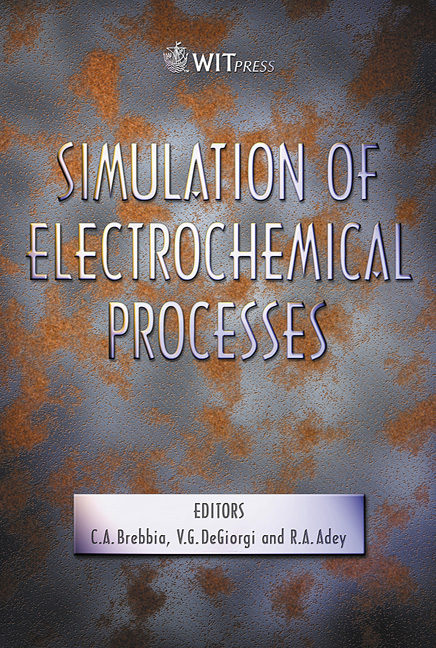Modeling The Electrodeposition Process: From The Macroscopic To The Mesoscopic, From Continuous Mathematics To Discrete Algorithms
Price
Free (open access)
Transaction
Volume
48
Pages
10
Published
2005
Size
1,540 kb
Paper DOI
10.2495/ECOR050151
Copyright
WIT Press
Author(s)
Ph. Mandin, J. M. Cense, C. Fabian, C. Gbado & D. Lincot
Abstract
The chemical bath electrodeposition process is used in many industrial applications to obtain a thin layer material on surfaces. Numerous semi-conductor or magnetic materials, such as oxide, chalcogenure or alloys, are obtained in electrochemical cells on a laboratory scale. Some of these materials are interesting enough to be produced on an industrial scale, for example for fuel cells or photovoltaic applications. In industrial electrochemical cells, dimensions are larger and many properties such as hydrodynamics or electroactive transport are heterogeneous. There are many industrial electrochemical techniques in which the electrode moves with respect to the solution. These systems, like the rotating electrodes, are called hydrodynamic electrochemical processes. It is also interesting to notice that the micronic structures, such as material deposit roughness or porosity, are local properties. The deposit velocity and structure need integrated information from the micronic scale to the industrial scale. The aim of the present work is to model and to numerically simulate the hydrodynamics and electrochemical coupled phenomenon which occur during the chemical bath electrodeposition process for classical electrochemical configurations. Experimental measurements obtained on a laboratory scale with copper deposits are used to identify a realistic modelling which can be assumed to be conserved during the scale-up. The numerical method used at the continuous scale is the finite volume method. In addition, using a Monte Carlo method, local micronic properties are calculated such as the roughness and the porosity of the thin layer material obtained.
Keywords





